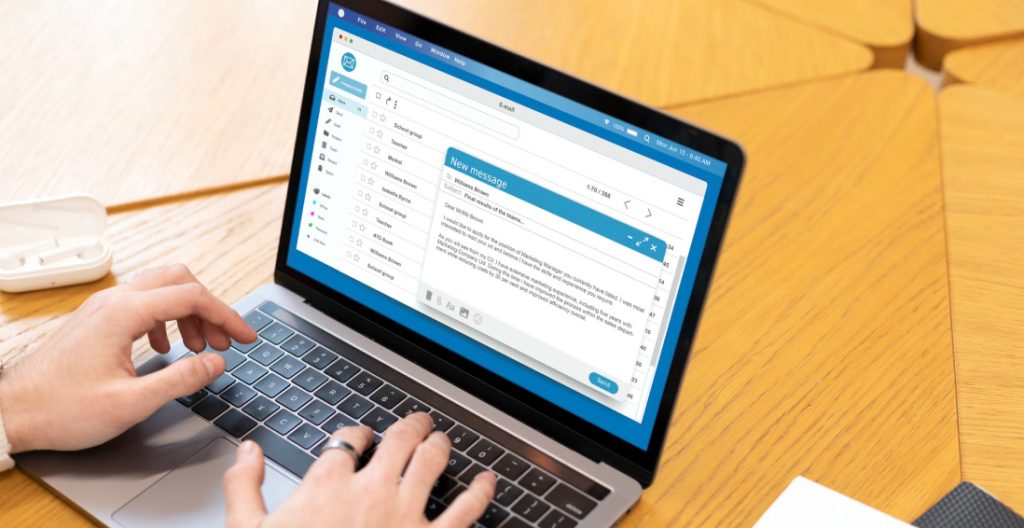Email marketing is an amazing digital marketing strategy to drive more sales and retain customers for a longer time.
And every SEO reseller uses it in their strategy. It’s among the most ROI-driven marketing practices that bring significant results when performed right.
However, as we are moving towards a highly digitized era where customers’ inboxes are generally flooded with promotions, standing out becomes difficult.
To entice your prospects to open your email and click on the CTA to take any action, you need to rethink how you have been performing it. Hence, you need to pay closer attention to details and improve it as your customers want to see them.
In this article, we will have a look at the top five tips for creating a successful call to action in your email to drive maximum revenue. If you are just starting out, these tips will help you take the lead and grow your business.
Importance of Creating a Successful Call to Action in Your Business Emails

Email is still one of the most effective tools when it comes to business communication. It does not matter whether you are communicating with your colleagues or customers. Ensuring the right implementation of emails is crucial.
Despite the rise of a plethora of messaging apps and other communication platforms, most businesses prefer emails. Moreover, when it comes to email, you need only fewer resources for optimum results.
The following are some of the reasons why creating a successful call to action in your business emails is important:
- Email is effective because it has universal access. Moreover, they are also interoperable across a variety of platforms. Thereby, you can ensure seamless communication between stakeholders.
- Email is one of the fastest and most efficient ways of sending messages. Whether you want to send an email internally or externally, you will get real-time results.
- Moreover, with the help of emails, you can respond to customer inquiries better and faster. Hence, with this instant access to information, email has become a valuable tool for businesses.
- When you compare emails to other communication methods and platforms, you will find that the former is more cost-effective. Furthermore, you also do not need excessive business resources to succeed with effective communication.
- Email comes with high-profile security options. These include transport-layer security (TLS) and others. Hence, when you send confidential information, it remains safe and secure.
Tips for Creating a Successful Call to Action in Your Business Emails

The following are some of the major tips you need for creating a successful call to action in your business emails:
1. Keep It Real:
To generate trust and improve the overall click-through rate, you need to keep everything real. Also, you must ensure there are not any gimmicks or excessive terms and conditions.
Be very clear about what you are offering and what benefits the readers will get if they click on the button. For example, you can highlight text like there are no hidden charges, you pay what you see, and more like them.
These types of text not only help you improve the call to action but also help you gain trust faster among your customers.
This thing applies to every section of the email — be it the subject line, body text, or the main CTA. Also, you must ensure there is no misleading clickbait that will increase the bounce rate or unsubscribe rate.
2. Short And active:
Ask your copywriter to draft every email in an active voice with very short and crisp sentences. It makes no sense to write long lines or paragraphs, and it is the main reason behind it.
Many people check their emails on the go from their smartphones, and if the email is lengthy, they might skip it and save it to read later.
However, as an average user receives a lot of emails a day, the probability of opening the email is very low.
That’s why you should keep the email text as simple and short as possible.
However, make sure it’s conveying the entire message that you want to present to the readers. You can keep the email body text within 100 – 150 words as it’s easier to read and incite users to take the desired action.
3. FOMO Works
Creating a sense of urgency using the fear of missing out technique works if you implement it correctly. No one wants to miss out on great deals, especially when they need that product or service.
You need to make your audience feel they will miss out on something really great if they don’t take action right now. You can specify in bold text that it’s a time-sensitive offer only, or you can run a counter on the landing page.
This technique will bring a higher CTR and will make your call to action more prompt and active participation. You will find a lot of free FOMO templates to make your copy more exciting and click-worthy.
4. Use The Right Colors:
This trick sounds ordinary, but it brings extraordinary returns and improves your business email’s overall call to action. Pick the colors that reflect your brand, and don’t change the color theme frequently.
Your readers should register a common theme so that when they open your email, it will remind them of your brand.
Apart from colors, don’t overdo animations as they might load slower on some devices due to any reason. Keep the color scheme simple, attractive, and clutter-free. You can use email marketing tools and pick any premade campaigns if you are not into designing them.
5. Creativity:
Smart creativity is the key when it comes to a successful call to action in your business emails. Be creative because you need to stand apart from the rest and attract your busy readers’ attraction in a limited time span.
You need to understand that people’s attention span is very limited, and you need to make every aspect click-worthy without getting spammy.
Instead of using a free stock image, ask your graphics team to create bespoke images that can match your custom offer and improve the CTA.
Create A Successful Call To Action Now
Hence, you can see that creating a successful call to action in your business emails is not very difficult.
Follow these simple steps to create a successful call to action and drive more sales to your business. Email marketing is not hard, and it can drive substantial results for your business strategies.
However, if you are not into emails, it’s the right time to get started and drive additional traffic and revenue to your business. Keep experimenting with different formats to check which works best for you.





















